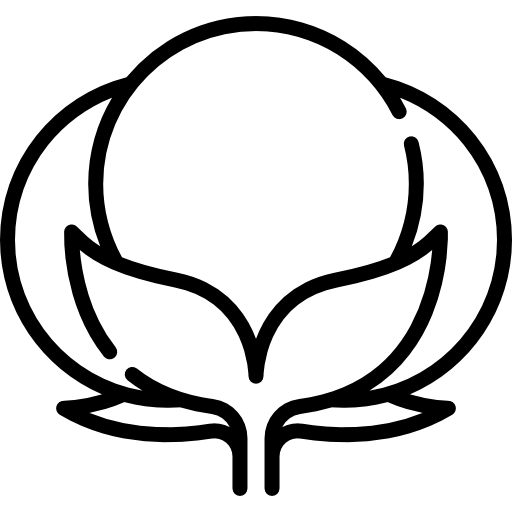Le reine des abeilles La reine est le cœur de la ruche et joue un rôle crucial dans la stabilité et la productivité de la colonie. La mort de la reine peut plonger la ruche dans une situation critique. En tant qu'apiculteur, savoir gérer cette situation est essentiel pour assurer la survie et la santé de sa ruche. Dans cet article, nous explorerons comment gérer les difficultés liées à la mort d'une reine, de l'identification précoce des signes à la réussite du remplacement de la reine.
Comprendre la dynamique de la ruche lorsque la reine des abeilles meurt
Dynamique de la ruche et comportement de la colonie
Lorsqu'une reine meurt, la dynamique de la ruche change radicalement. Les phéromones de la reine, qui régulent le comportement et la cohésion de la ruche, commencent à se dissiper. Sans ces phéromones, les ouvrières peuvent être désorientées et moins efficaces dans leur rôle. L'absence de reine signifie également qu'il n'y a plus de nouveaux œufs pondus, ce qui menace la population future de la ruche.
Rôle des abeilles ouvrières
En l'absence de la reine, les ouvrières jouent un rôle essentiel dans le maintien de la ruche. Elles tentent souvent d'élever une nouvelle reine à partir des larves existantes, mais ce processus peut s'avérer semé d'embûches. La capacité des ouvrières à gérer efficacement cette transition détermine la survie de la ruche pendant cette période critique.

Identifier les signes d'une reine des abeilles mourante ou morte
Indicateurs communs
La détection précoce d'une reine mourante ou morte est essentielle à une gestion efficace de la ruche. Voici quelques signes à surveiller :
- Diminution de la ponte:Une baisse notable du nombre d’œufs pondus peut indiquer une reine défaillante.
- Comportement erratique:Les travailleurs peuvent présenter un comportement inhabituel ou une agressivité accrue.
- Rugissement sans reine:Un changement distinctif dans le son de la ruche, souvent plus fort et plus chaotique.
- Plusieurs cellules royales d'urgence:Les ouvrières peuvent commencer à construire de nombreuses cellules royales dans une tentative frénétique d'élever une nouvelle reine.
Une détection précoce permet une intervention rapide et réduit le risque d'effondrement de la colonie. Des inspections régulières des ruches et une attention particulière aux changements de comportement peuvent vous aider à détecter les problèmes plus tôt.
Mesures immédiates à prendre lorsque la reine des abeilles meurt
Actions d'urgence en apiculture
Lorsque vous confirmez que la reine des abeilles est morte, prenez des mesures immédiates pour stabiliser la ruche :
- Calme la colonie:Utilisez un enfumoir pour calmer les abeilles et minimiser le stress.
- Évaluer la situation:Inspectez soigneusement la ruche pour confirmer l’absence de la reine et évaluer l’état de la colonie.
- Retirer les cellules royales d'urgence:Si la colonie n’est pas adaptée à l’élevage d’une nouvelle reine, retirez les cellules royales d’urgence pour préparer l’introduction d’une nouvelle reine.
Assurer la santé et la sécurité
Assurez-vous que la ruche est exempte de parasites et de maladies qui pourraient aggraver la crise. Offrez une nourriture adéquate et maintenez des conditions de vie optimales pour soutenir les abeilles pendant cette période stressante.
Le processus de re-reine
Le remplacement de la reine consiste à introduire soigneusement une nouvelle reine dans la ruche. Voici comment procéder :
- Choisissez une nouvelle reine:Sélectionnez une reine saine et fécondée provenant d’une source fiable.
- Présentation de la cage Queen: Placez la nouvelle reine dans une cage à reine munie d'un bouchon à bonbons. Insérez la cage dans la ruche.
- Acceptation du moniteurLaissez aux ouvrières le temps d'accepter la nouvelle reine. Elles rongeront le bouchon de sucrerie et la libéreront progressivement.
- Observer le comportement: Soyez attentif aux signes d’acceptation ou de rejet.Si les ouvrières sont agressives envers la cage, il faut plus de temps.
Conseils pour une transition réussie
- Nourrir la ruche: Assurez-vous que les abeilles disposent de suffisamment de nourriture pour réduire le stress.
- Minimiser les perturbations:Évitez les inspections fréquentes de la ruche pendant la période d’acceptation pour permettre à la colonie de s’adapter.
Gestion de la dynamique de la ruche pendant le processus de changement de reine
Comportement des abeilles ouvrières
Les ouvrières peuvent adopter des comportements variés lors du changement de reine. Comprendre ces comportements peut aider à gérer efficacement la ruche :
- Agression initiale:Une certaine agressivité initiale envers la nouvelle reine est normale. Utilisez une grille à reine si nécessaire pour la protéger.
- Alimentation et soins:Une fois la nouvelle reine acceptée, les ouvrières la nourriront et prendront soin d'elle, indiquant une intégration réussie.
Surveillance de la ruche
Une surveillance régulière est essentielle durant cette période. Vérifiez les signes d'introduction réussie de la reine :
- ponte des œufs:La nouvelle reine devrait commencer à pondre des œufs dans une semaine.
- Comportement calme:La ruche devrait revenir à des niveaux d’activité normaux, indiquant une réduction du stress.
Assurer la survie et la santé à long terme de la ruche
Stratégies de gestion à long terme
Après avoir réussi le remplacement des reines, concentrez-vous sur la santé de la ruche à long terme :
- Inspections régulières: Continuez les inspections régulières de la ruche pour surveiller les performances de la reine et la santé générale de la ruche.
- Lutte contre les parasites et les maladies:Mettre en œuvre des mesures régulières de lutte contre les ravageurs et les maladies pour maintenir un environnement de ruche sain.
- Nutrition:Assurez-vous que la ruche dispose d’un approvisionnement alimentaire constant, en particulier pendant les périodes de pénurie.
Mesures préventives
Mettre en œuvre des mesures préventives pour éviter de futures crises :
- Surveillance de la reine:Vérifiez régulièrement la santé et la productivité de la reine.
- Diversité génétique:Envisagez d’utiliser des reines issues de diverses lignées génétiques pour améliorer la résilience des colonies.
Conseils pratiques pour les apiculteurs en matière de gestion de crise
Conseils supplémentaires pour les apiculteurs
Gérer une ruche pendant la crise de la perte d'une reine nécessite des compétences pratiques en apiculture :
- Rester calme:Les abeilles ressentent votre stress. Approchez-vous de la ruche calmement et méthodiquement.
- Éduquez-vous:Formez-vous continuellement sur les pratiques apicoles et la gestion de crise.
- Rechercher du soutien:Rejoignez les communautés ou forums d'apiculture locaux pour obtenir du soutien et des conseils.
Erreurs courantes à éviter
Évitez ces erreurs courantes pour assurer une transition en douceur :
- Accélérer le processus:Donnez à la ruche le temps d'accepter la nouvelle reine. La patience est essentielle.
- Négliger la ruche:Un entretien et une surveillance réguliers sont essentiels, notamment lors du remaniement.
- Ignorer les signes de rejet:Si les abeilles rejettent la nouvelle reine, agissez rapidement pour introduire une autre reine ou soutenez la ruche par d’autres moyens.

Équipez-vous de combinaisons et de gants d'apiculture d'OZ Armour
Lorsque vous gérez votre ruche pendant la crise du décès d'une reine, il est essentiel d'assurer votre sécurité et votre confort.OZ Armor propose des produits de haute qualité combinaisons d'apiculture et gants d'apiculture Conçues pour offrir une protection maximale contre les piqûres tout en préservant votre confort lors des inspections et de l'entretien des ruches, nos combinaisons d'apiculteur sont fabriquées à partir de matériaux durables et respirants, garantissant une protection optimale sans surchauffe.
De même, nos gants d'apiculteur offrent une excellente dextérité et une excellente protection, vous permettant de manipuler vos abeilles en toute confiance. Investir dans un équipement de protection fiable OZ Armour vous permet de gérer votre ruche efficacement et en toute sécurité, même dans les moments difficiles.
Conclusion
La mort d'une reine est un événement critique, mais avec la bonne approche, vous pouvez gérer efficacement votre ruche. Reconnaissez les premiers signes de mort ou de disparition d'une reine et prenez immédiatement des mesures pour stabiliser la ruche. Un remplacement réussi des reines et une surveillance du comportement des ouvrières sont essentiels au rétablissement. Maintenez la santé de votre ruche à long terme grâce à des inspections régulières, à la lutte antiparasitaire et à une nutrition adéquate. Prévenez les crises futures grâce à la diversité génétique et à une surveillance régulière des reines. Équipez-vous Armure OZCombinaisons et gants d'apiculture de haute qualité pour une gestion sûre de votre ruche. En suivant ces étapes, vous garantirez la santé et la productivité de votre ruche.












